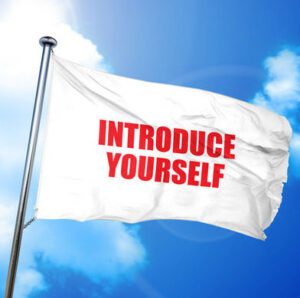By Dr. Ken Broda Bahm:

As you are putting on your case at trial, and you go to call your next witness, there’s always a reaction from the jury box. It’s an opportunity for fresh attention from them, but it is often a bit of a mystery: Who is this new person? What is their role in this controversy? What do they have to tell us? Maybe some of this was previewed for them in the opening, or maybe it wasn’t, but in either case, they are unlikely to remember it as the new witness is being sworn in. What the jury will need first and foremost is an introduction of the witness combined with their role and relevance. In some situations, it’s possible that jurors already heard from the witness when they were called in the other side’s case, but chances are good that the other side did not cover the full introduction from your perspective.
As part of preparing a witness for direct examination, the witnesses should be ready to give a complete, concise, organized and relevant introduction of themselves to the jury. That might seem obvious, but I am surprised by the number of witnesses who seem unprepared for what should be the most easily prepared question in the examination. I’ve seen some respond to the request for introduction by simply giving their name. Some start a rambling review of their history, while giving “what-do-you-want-me-to-say?” looks at their counsel. In some cases, the attorney needs to awkwardly walk the witness through their resume, or even risk a few leading questions in order to get this introduction out. None of that should be necessary. It is far better if the witness is prepared for that first easy question and ready to run with it in order to make a good first impression. In this post, I will cover three parts of the introduction that witnesses should be prepared to cover on their own in response to the first question in direct examination.
Please take a moment, Ms. Smith, to introduce yourself to the jury…
Who Are You?
The first part is the basic biographical introduction. It isn’t a life history, but it should tell the jury who you are, where you live, and what you do.
Thank you, my name is Jaqueline Smith, or Jackie, I live here in Harris County, Houston, with my family, and I am the Chief Executive Officer for Tele-Med Enterprises.
What Is Your Usefulness to the Jury?
The first part of the introduction should be brief, and need not cover all of your personal details. If any carry specific relevance for the case, include them. But otherwise, the most important part of the introduction is this second part: What needed information are you bringing to this jury?
[Looking at the jury] I believe that I am here to tell you about the early discussions with Dynamed, about our purposes in the deal, and whether anything was promised, expected, or understood outside the words of the contract.
Why Are You the Right Person to Give this Testimony?
The question of qualification applies not just to experts but to anyone giving testimony. Jurors want to know why you are the right person to provide this testimony. It goes to the relevance of the testimony, and also to your credibility.
As Tele-Med’s Chief Executive Officer, I was one of the main individuals responsible for seeking out and negotiating the agreement with Dynamed that is at the heart of this case. In that context, I believe I had at least some hand in every discussion that took place as part of the deal.
The introduction should be delivered comfortably and extemporaneously rather than scripted. But a well-prepared witness should be ready to simply cover the points out of the box without prompts from counsel. Some might look at that introduction and think that it omits some personal detail, or jumps into the meat of the case too quickly. And that is possible — the formula will vary for each witness. But jurors don’t really spend their early attention on a witness wondering where they were born, where they went to school, or how many children they have. Instead, they spend that early attention on a central implicit question: What can you tell me about this case, and why should I hear it from you? So cover that first.
Other Posts on Direct Examination:
- Your Direct Examination: Know the Steps, but Let the Attorney Lead
- Direct Examination: Start With a Goal, Not an Outline
- Be the Director of Your Witness’s Direct Examination